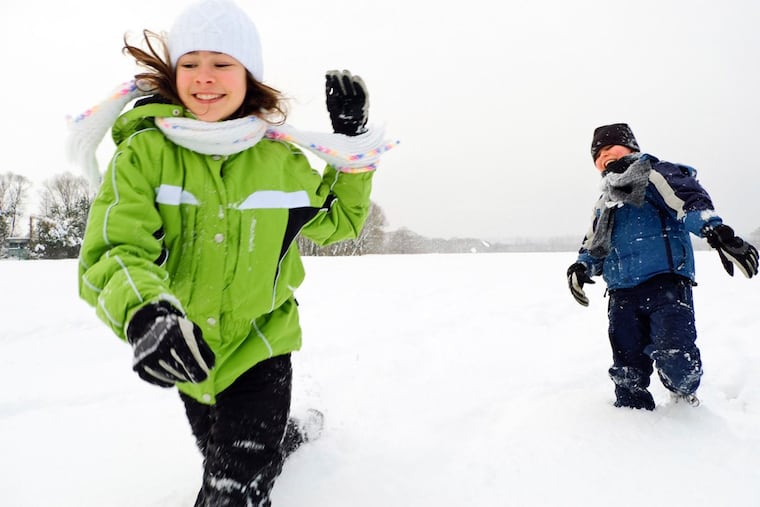3 creative cold weather activities for your kids
While we may want to retreat inside, colder weather can be some of the best times for children to enjoy the beauty of nature and become citizen scientists!

As the temperature continues to dip, we often find ourselves indoors. But, the colder weather can be some of the best times for you and your children to enjoy the beauty of nature and become citizen scientists!
Although the fall and winter months represent a general decrease in plant and animal activity, these seasons still provide us with more opportunities to engage in observation using senses other than just our eyes. Here are three ways to engage in some fun, STEAM-focused (science, technology, engineering, arts and mathematics) investigations with your children.
1. Observe your surroundings: Take advantage of the colder weather and observe your surroundings. While there may not be as much activity outside in the fall and winter months, there is still a lot going on around us. Grab your coats, hats, and gloves and head outdoors.
Find a quiet space to take in your surroundings and have your children close their eyes. After a few moments, ask them what sounds they are hearing. What scents do they smell? What do they feel on their skin? Then, have them do the same with their eyes open. It's a perfect time for them to get more connected to nature. You could also bring along a sketch book and have them draw what they are seeing as a creative way to illustrate the world around them.
2. Observation tools/citizen science: Invest in a pair of binoculars! Encourage your children to set aside time to observe the world around them and explore it through this observational tool. They may start to notice birds and other animals that stick around for the chillier months or the changes in trees and plants. Ask them questions about what they are seeing and have them write their observations down in a journal. Once they observe over a period of time, it's a nice way to look back and reflect on what they've viewed through their binoculars.
Take the science fun a step further and have your children input their findings on Zooniverse. It's a people-powered project platform that includes subjects like science, social studies and finance designed for children and adults. You and your child can enter the data you've collected and it can be used for real research. Your children will become instant citizen scientists!
3. Photography that lasts: Do you have a favorite view from a window in your house? If so, this is a fun way to engage your children. Each day for a week or a month (however long you'd like!), take a picture from the same spot and start to observe the changes. Over that period of time, you and your children can track what you've captured on your camera or iPhone. For example, have the trees or leaves changed? Do you notice any animals? What do the clouds look like? Talk with your children about why those changes may or may not be occurring this time of year. It's an interactive way to sift through all the images in a row and discuss the changes over time.
While the fall and winter seasons may prevent us from being outdoors as much as we'd like, there are still ways to keep your children's brains active and continue to explore, discover and learn!
Jaunine Fouché, D. Ed., is the Milton Hershey School Director of STEAM, Agricultural & Environmental Education